


Stunning!
Thought-provoking, awe-inspiring, magnificent.
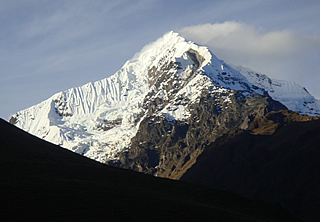

We left the Sacred Valley of the Incas on the early morning twin carriage train for Aguas Calientes, the small town where we would stay for our excursions to Machu Picchu.
We were so looking forward to this that we started to worry that it couldn't possibly live up to our expectations - but it did even better than that!
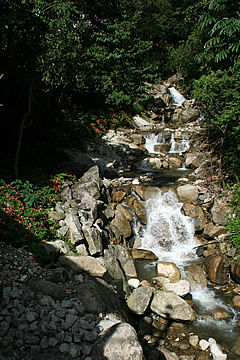
The 90 minute journey through the gorge of the Urubamba River was very pleasant. Food and drink were served - fresh fruit cocktail, small cheese and tomato roll, and biscuits. A choice of drinks but we stuck with the excellent black tea which we've been enjoying throughout our time in Peru.
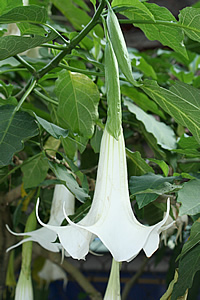
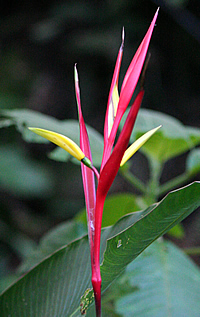
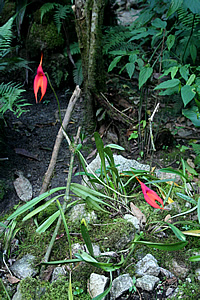
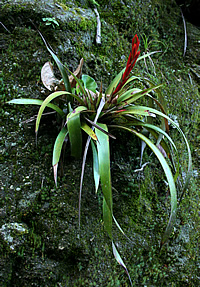
The scenery was first mountainous, with excellent views of Veronica, at around 5750m the highest peak in the Cordillera Urubamba range. The light was better on the mountain for photographs on the return journey. Further along the journey, nearer Aguas Calientes, we began to see Inca sites and terraces.
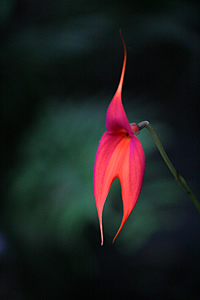
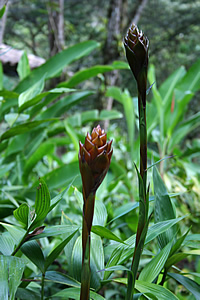
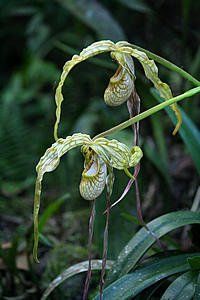
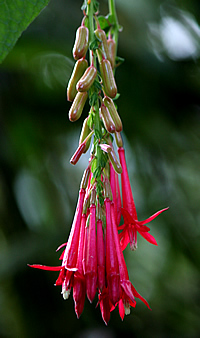
We arrived in Aguas Calientes at around 9:15 am and went straight to our hotel, the Inkaterra Machu Picchu Pueblo Hotel, to check in. This is a fabulous hotel, a lodge of white-washed cottages set in lush, jungle landscape. Each cottage is supplied with mosquito nets and repellent - we didn't see a single mosquito.
Later we had a chance to explore the grounds which extend down to the Urubamba River. They boast 200 bird species, 111 butterfly species and 372 species of orchids! Chestnut-breasted coronet hummingbirds were very common at the hotel feeders.

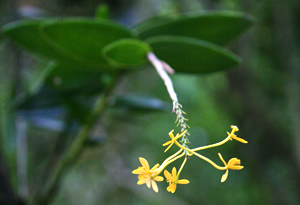
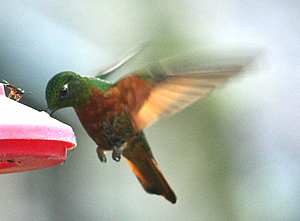
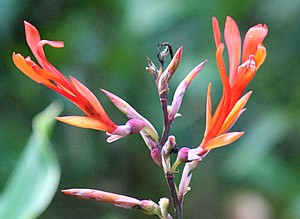
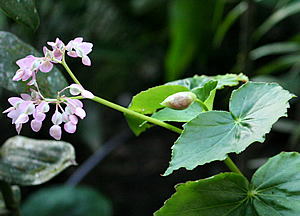
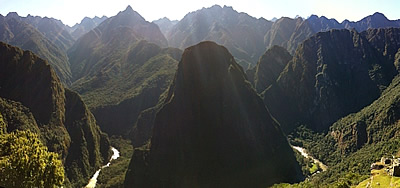
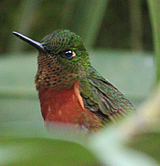
Back to the station for a 10a.m. rendezvous with our guide.
Then the exhilarating bus ride up to Machu Picchu. It took about 20 minutes, the bus travelling at some speed along the very winding road with some really impressive switchbacks - even for seasoned Swiss travellers!
Then a short climb to a guard house and the first magnificent view of Machu Picchu.

It really is very difficult to describe the feeling of looking at Machu Picchu - it is one of the truly awe-inspiring sights of the world.
This Inca citadel, at 2380m, is surrounded by steeply terraced slopes. The peak behind Machu Picchu to the north is Huayna Picchu, at 2720 m significantly higher. Machu Picchu means "Old Peak" Huayna Picchu "Young Peak". Surrounding it all are deep green jungled mountains.
Our guide was very patient and allowed us to spend quite some time at this spot just taking it all in. Then we began to climb down into the ruins and he explained the functions of all the different buildings and areas. For three hours we wandered around and tried to take in everything he was telling us.
Machu Picchu was built in the fifteenth century, possibly for the Emperor Pachacuti. It has the aspect of a small, self-contained city with agricultural terraces, storehouses, industrial buildings, homes, as well as temples and a palace. Late in the sixteenth century it was abandoned, no-one really knows why. The jungle reclaimed the land and buildings almost totally until Hiram Bingham, a Yale University history professor, arrived in 1911, and was shown Machu Picchu, or what little could be seen, by a local Quecha boy.
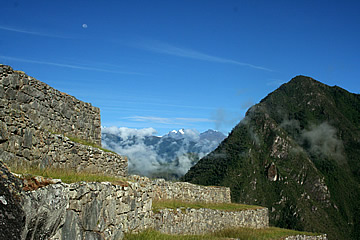
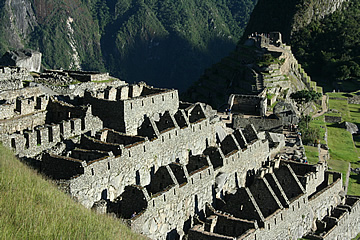
As with all the Inca sites that we have seen, every spare patch of ground is terraced. On the way down to the entrance via the City Gate, terraces on our left spilled down the mountainside. The City Gate is oriented directly facing Huayna Picchu.
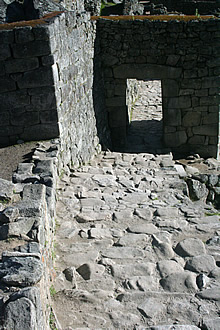
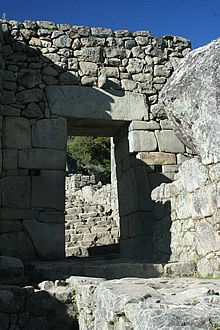
On the inside of the City Gate there would have been a wooden gate with a typical Inca locking mechanism. The recessed posts either side and protruding pierced stone above the lintel would have been part of the mechanism.
The rows of buildings which extend downhill from the City Gate have pitched roofs and windows. The interiors have niches and the roofs would originally have been thatched but of course this has not survived.
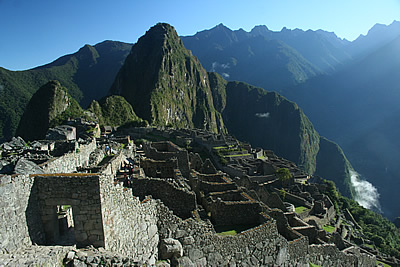
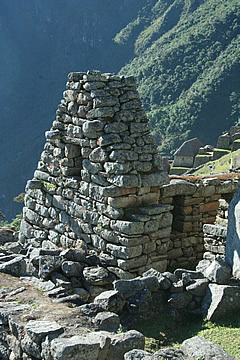
In Pisaq in the Sacred Valley of the Incas we had seen buildings with curious interior stone protrusions or pegs near the roof line. Here in Machu Picchu they can be seen on both interior and exterior walls. No-one seems to know what they are for.

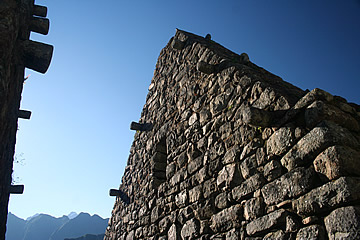

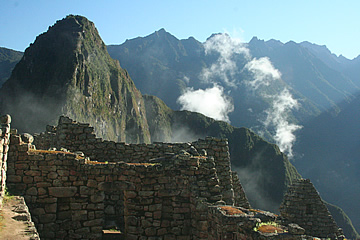
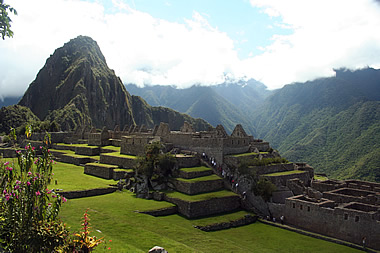

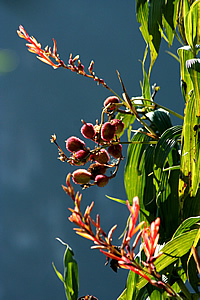
On the way to the Sacred Plaza there is a botanical garden, with examples of indigenous plants.
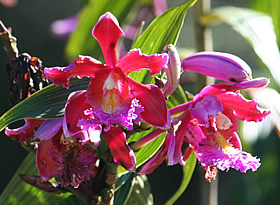
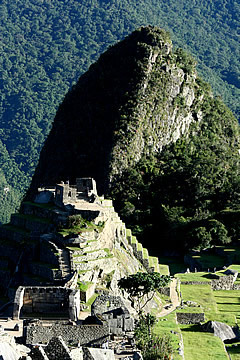
The sacred ceremonial area encompasses the Temple of the Three Windows and the Principal Temple in the Sacred Plaza, and Intihuatana - the Hitching Post of the Sun - on the top of a terraced hill.
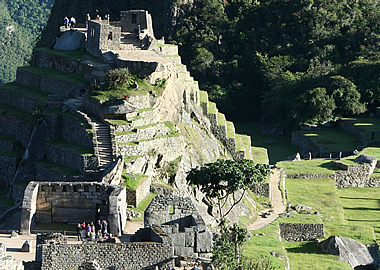
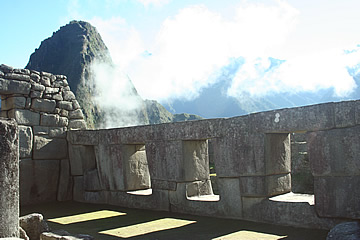
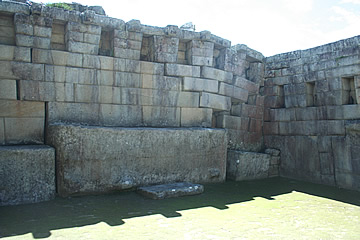
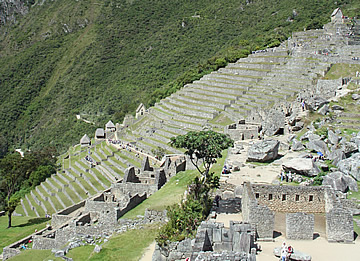
In the Principal Temple in particular some massive stones were used in construction, and in the Temple of the Three Windows there were at least three huge ten-angled blocks
Along the main wall of the Principal Temple are one huge and two smaller blocks of stone, standing out from the wall, that look suspiciously like altars. The east end of the wall has slipped, displacing blocks of stone, due to earth movements.
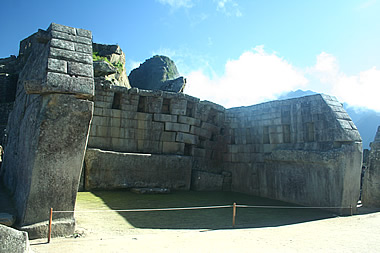
In the Sacred Plaza there are actually three buildings, the third, facing the Main Temple, is called the House of the High Priest and is constructed from particularly fine stonework.
Passing out of the Sacred Plaza on the way to Intihuatana there is a small building called the Sacristy, connected to the Principal Temple. It is famous for the large multi-angled stones flanking the entrance with over 30 angles worked into the stone.
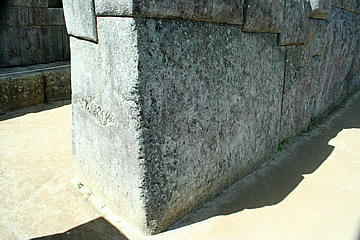
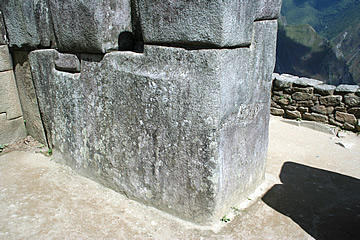
Fitting stones together in such a jigsaw fashion not only looked impressive, it would have significantly added to the stability of the walls. The Incas probably had the most highly developed stoneworking skills the world has ever seen.
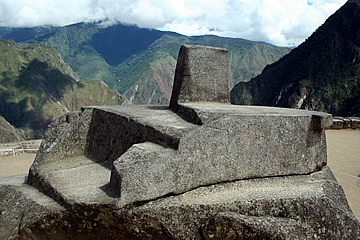
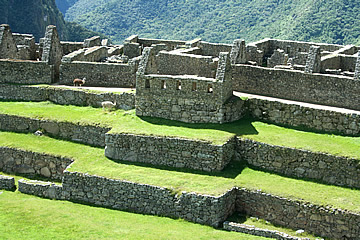
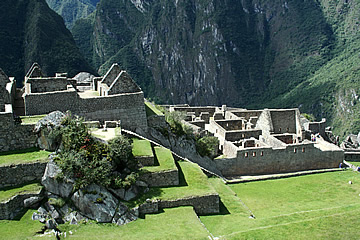
It is a short climb up to the Intihuatana, the Hitching Post of the Sun, at the highest point of the urban sector. It is thought to have astronomical significance, probably a solar clock, but it is also postulated that the surrounding mountains have some significance in its shape. At the spring and autumn equinoxes the noonday sun sits directly over the vertical rock protrusion - the hitching post - on the top of the slab. This is when the sun is said to be "tied" to the rock (Sacred Sites website).
It appears to be the only surviving example of a sacred Intihuatana, all the others being destroyed by the Spaniards. Unfortunately it was damaged in 2000 when a crane sneaked in by a film crew toppled over while filming a commercial for Cusqueno Beer ( http://news.bbc.co.uk/2/hi/americas/923415.stm ).
From here there are fine views across the large Central Plaza to a residential area.
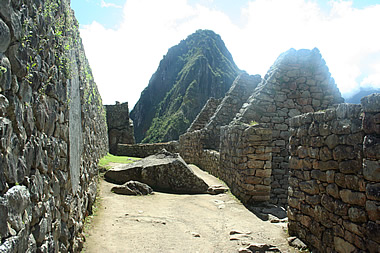
We walked through the Central Plaza and the residential district down to the start of the path up Huayna Picchu where there is a large ceremonial rock, said to be an image rock, carved to mimic the mountain behind it. Then back through the buildings on the east of the site to the Temple of the Condor to the south east of the Central Plaza.
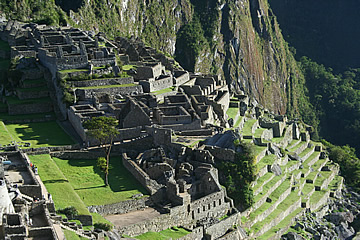
The Inca were very superstitious and reverential towards natural phenomena, particularly rocks.


The Temple of the Condor holds one of the more curious surviving manifestations of their beliefs. Two large rock formations here are likened to the outspread wings of a condor, while its head and neck are represented by a flattish rock formation on the ground. The condor was a sacred creature, representative of the spiritual or celestial life. Human life was represented by the puma, and the underworld by the snake.
It is thought that the flat, triangular rock representing the neck was a sacrificial altar.
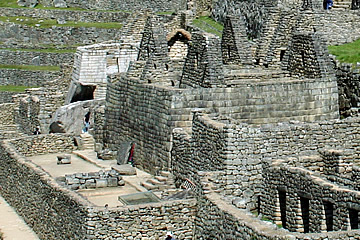
Returning to the western urban sector we passed through what is thought to be a palace where one of the rooms is supposed to be a royal bathroom due to the presence of a drainage hole in the floor.
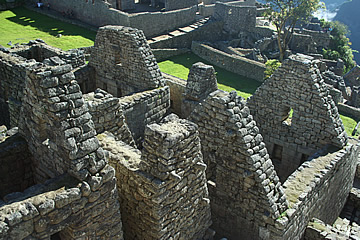
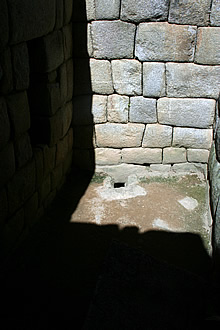
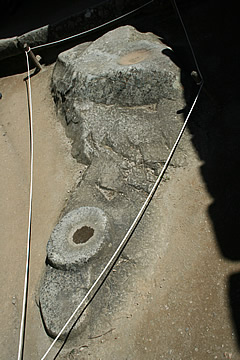
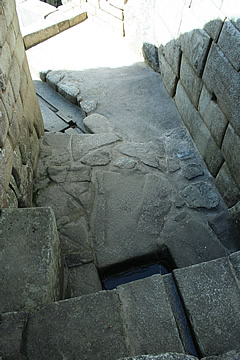
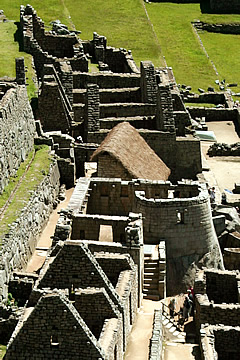
This group of buildings is certainly in a prime location, on the edge of the urban sector and south side of the Central Plaza, and would have uninterrupted views across the main square to the mountains and particularly Huayna Picchu if it were not for the fine stone wall surrounding the precinct, though there is a terrace in front.
The palace also lies close to the first fountain on the Stairway of the Fountains, which has first access to water from the spring, and may have been for the sole use of the emperor.
The Stairway of the Fountains lies just north of the Temple of the Sun and south of the Palace, and runs from the top of the western urban sector to the Temple of the Condor. Along its length are water channels and fountains, now renovated and running with water.
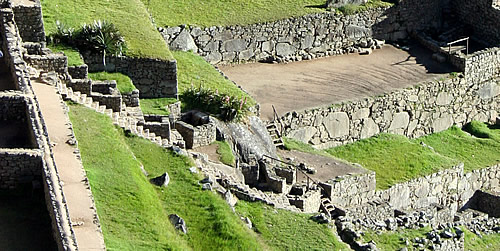
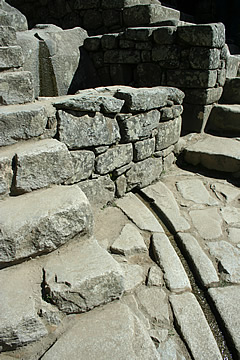
The water channels are frequently concealed underground or behind walls. From the Temple of the Condor the water drains, partly underground, in a channel leading outside the urban sector (The Fountains of Machu Picchu).
Along the staircase the water cascades down a series of channels into small areas, partially enclosed by low walls, which are called fountains or baths, of which there are 16. The water was probably collected in vessels and taken away for drinking and cooking purposes as well as for washing and cleaning. Because the first fountain was reserved for the emperor, and the palace lies below the houses, the ordinary people would have that much further to go to collect their water.
Machu Picchu could not have existed without a reliable clean water source. The spring feeding the fountains must have been studied by the Inca before building the city to confirm that it was sufficient to satisfy the requirements of the people.
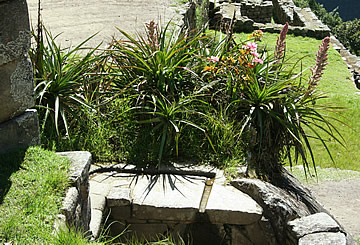
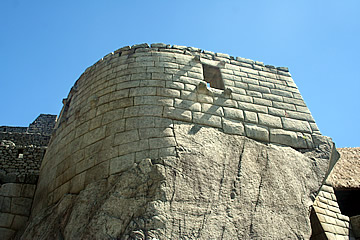
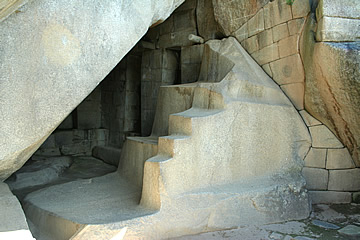
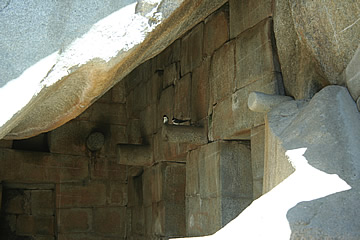
When the system was renovated by Wright Water Engineers, Inc., of Denver, Colorado, it was discovered that the hydraulic systems within Machu Picchu were highly sophisticated. Run-off from the roofs of buildings and the streets was channelled into a drainage system and kept away from the fountains. Waste water from e.g. the "royal" bathroom was also channelled away from the fountain system so that a clean supply of fresh water was ensured from top to bottom of the stairway (Water Supply and Drainage at Machu Picchu).
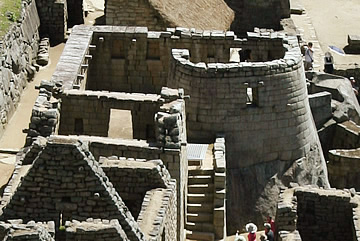
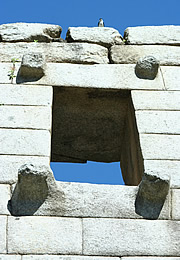
The distinctive Temple of the Sun, with its semi-circular walls, is perched on a hollow rock feature. The Sun God Inti was one of the most important gods of the Inca pantheon. At the summer solstice the sun shines through one of the windows of the temple onto the natural rock enclosed by the wall at the top of the temple. Possibly the finest stonework of Machu Picchu is found here.

Below the Temple of the Sun is a natural cave which has been further enclosed with some very intricate stone walling. The cave is known as the Royal Tomb. Inside are man-size trapezoidal niches and a stone shelf which may have been a sacrificial altar. On the floor is a large flat stepped stone with a vertical stone fin, reminiscent of the Intihuatana.
.
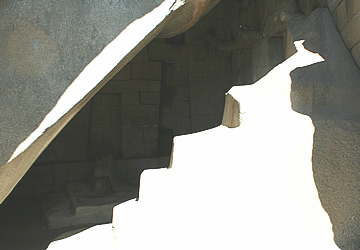
Now we had come back almost to our starting point in the area of the eastern agricultural sector with its fine terraces and restored storehouses roofed with thatch.
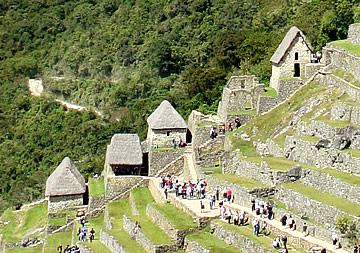
Three hours exploring the site, with a lot of ascending and descending of staircases, we were tired and ready for lunch at the Sanctuary Lodge. The buffet wasn't great but the desserts were ok: small squares of apple cake, gooseberry cheesecake and lemon meringue pie!
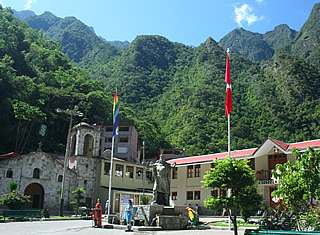
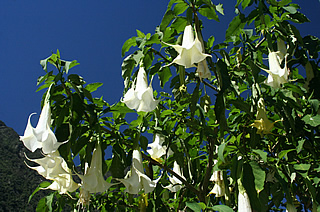
Aguas Calientes - it means "hot water" - is little more than a century old. The town which has grown up here has its own hot springs which supply public baths.
It saw its first population boom, albeit a small one, when the railway was built in the early part of the twentieth century. Its size and population now is due entirely to the proximity of Machu Picchu. It is not a particularly attractive place, though, with many touristy places to eat.
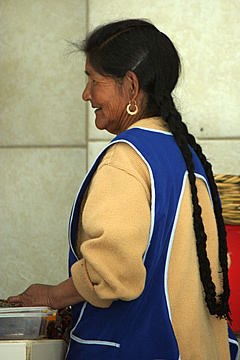
The town was badly affected in January 2010 by massive floods. Very heavy rainfall caused the raging torrent of the Urubamba to burst its banks and several villages in the region were flooded. The heavy rain and mudslides badly damaged railway tracks and roads. Many of the streets now bear "Via de Escape" signs. The rains - the worst in many years - had no effect at all on Machu Picchu.

We enjoyed wandering the market and just observing the local people going about their daily life, especially the women, their faces full of character and their long, thick dark hair tied in braids.
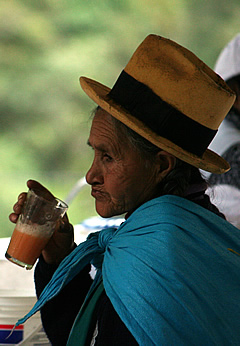
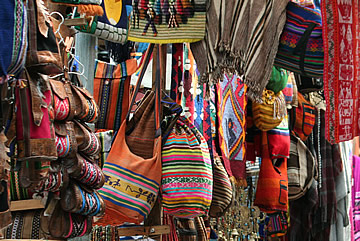
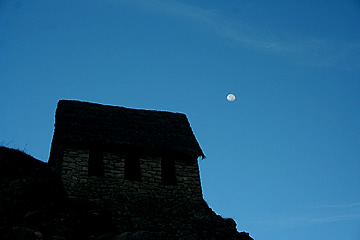
The following morning we rose while it was still dark to catch an early bus up to Machu Picchu. Lots of people had the same idea but we were well placed and got a bus at 6:15am.

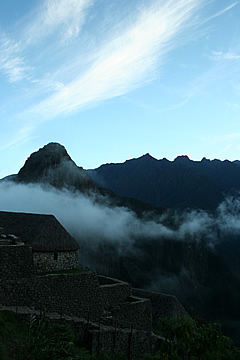
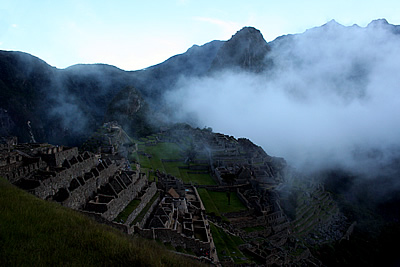
It was still dark as we climbed the winding roads up to the site and dark as we walked up to the vantage point just below the guard house, where we had started our visit yesterday. Then we waited for the sun.

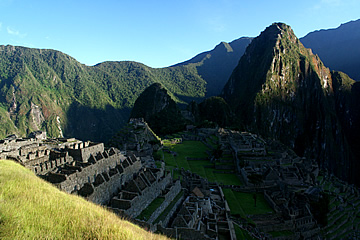
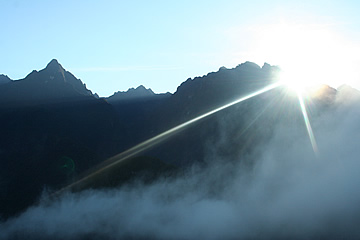
It was a perfect morning, clear with mist rising up from the valleys. As the sun came up the mist disappeared and gradually Machu Picchu was revealed - magical.
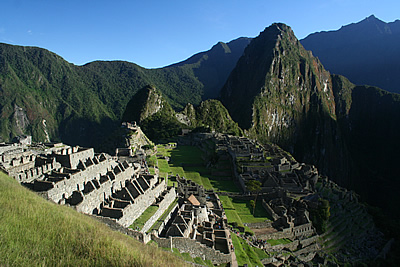
We watched the sun rise for well over an hour until Machu Picchu was bathed in light, then we re-entered via the City Gate to explore the ruins again, returning to some of the interesting things we'd seen yesterday and visiting areas we hadn't yet been to.
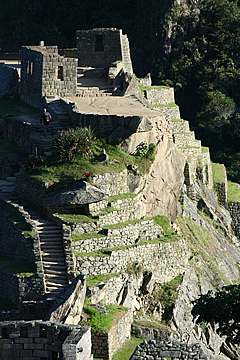

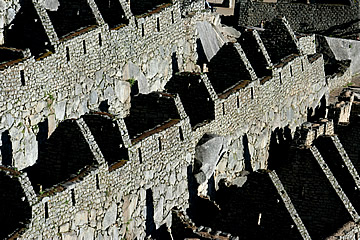
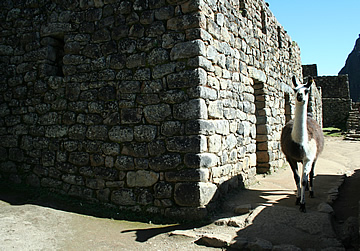
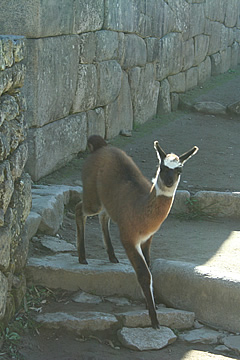
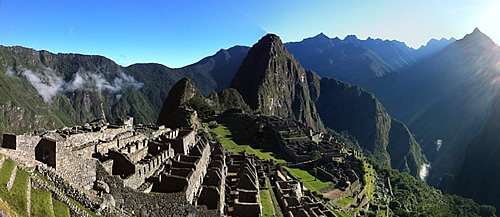
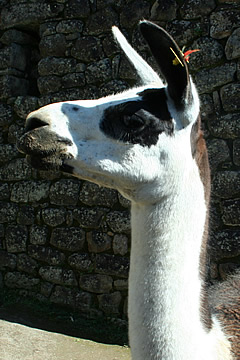
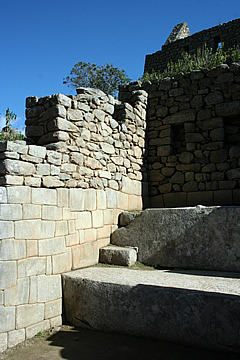

A number of camelids wander around the site - some rather nervous of humans, others quite bold. They all look rather short-haired and like guanaco or vicuna rather than llama or alpaca.
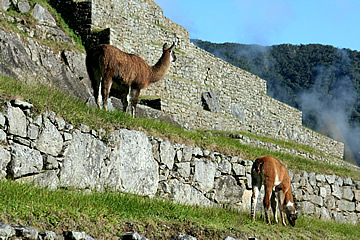
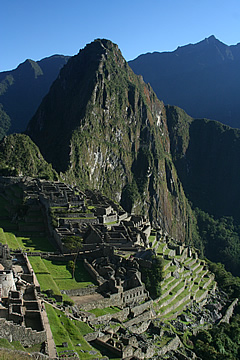
On the east side of the Central Plaza, in the so-called industrial sector, the buildings look almost as if they have been rushed to a finish. Fine close mortarless stonework is topped with rough, mud-packed walls. This is not due to restoration as photographs from 1911 show these walls much as they are today.


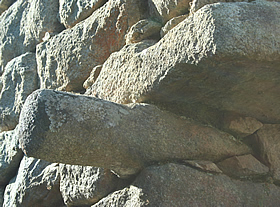
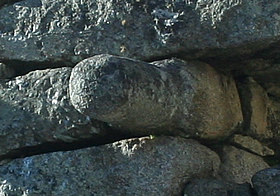
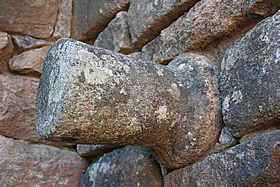
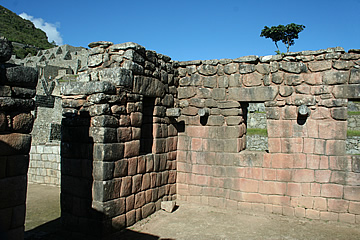
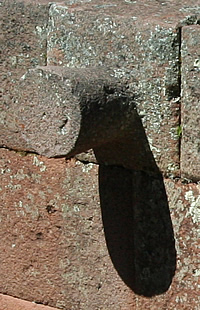
Here we noticed that the pegs are not integral to a block of stone, as we had seen for instance in the very fine stonework at Pisaq, but were hewn roughly, sometimes on a pointed base. This would obviously mean that such pegs could have been made wholesale at the quarry and then carried to where they were needed - in the process sacrificing a high quality finish.
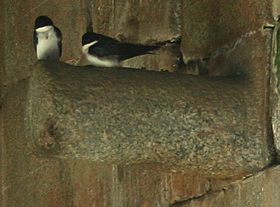
Another stone feature we noticed were ring stones, which are always on gable ends. It has been postulated that these were used as anchor points perhaps for ropes to hold the thatch onto the buildings more securely, though not all buildings have them by any means.
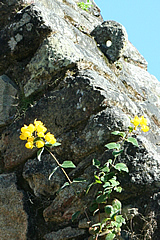
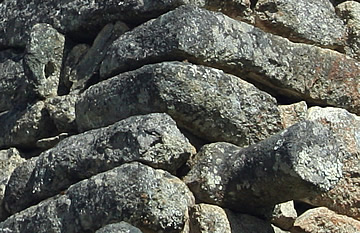
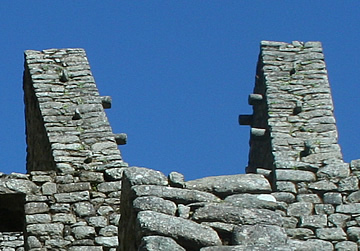
We walked to the far eastern edge of the site, looking down on the Urubamba River and just sat for a while taking it all.

Here the terracing is near vertical, dropping steeply into the jungle above the river.
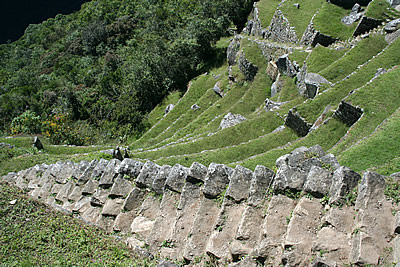
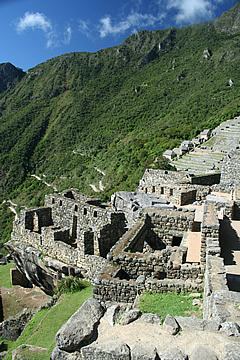
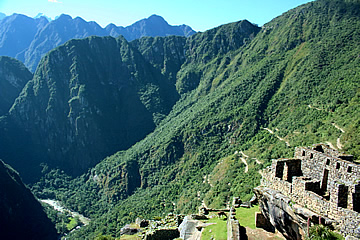
We came upon another carved stone altar here, with steps chiselled into the side and strange surface features - it looked unfinished.
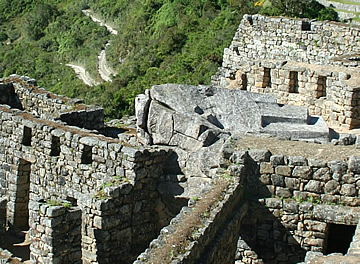
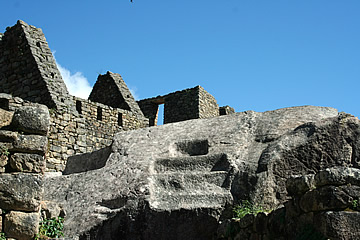
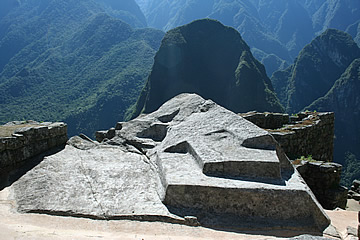
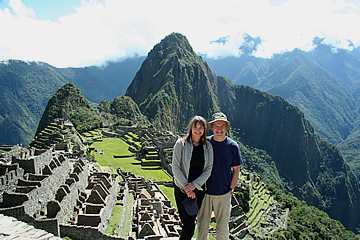
Machu Picchu is one of the most fascinating and beautiful places we've ever visited, one we'll never forget.